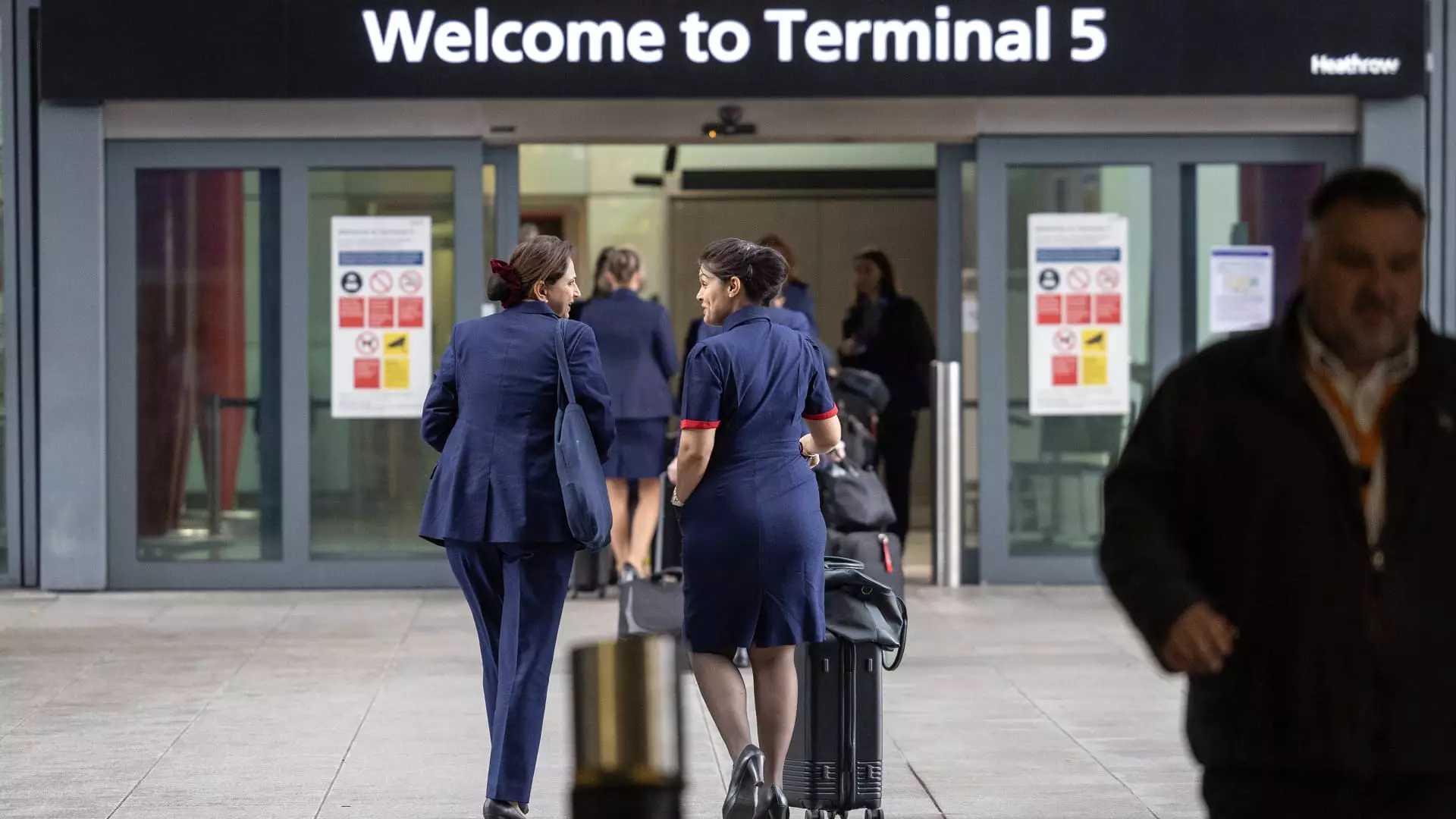When we think of travel hubs, London’s Heathrow Airport frequently comes to mind as a bustling emblem of modern connectivity. However, on a seemingly ordinary Friday, this titan of aviation faltered in spectacular fashion. The airport was brought to its knees by a power outage triggered by a fire at a nearby electrical substation, resulting in a staggering cancellation of over 800 flights. While on the one hand, operational challenges of this magnitude might be dismissed as mere “technical difficulties,” they instead raise significant concerns about the underlying infrastructure of one of the world’s busiest airports.
It’s easy to dismiss this incident as a freak occurrence, but the aftermath reveals the fragility of our essential services. While the immediate restoration of power was promptly addressed, it was the sheer scale of cancellations and the chaos that ensued that truly painted a portrait of failure. When a simple fire can cripple an essential transport hub, one must question the robustness of the systems in place. Are air travelers prepared for a future where their lives can be disrupted so dramatically by a single point of failure?
Delays and the Disruption of Lives
As operations resumed Saturday morning, the message was clear: a return to normalcy was far from guaranteed. Passengers were left stranded, and the scrambling by airlines to accommodate those affected led to a confusing tapestry of cancellations and rebookings. British Airways, an airline already famed for its customer service mishaps, found itself at the epicenter. With more than half of its Friday flights grounded, the chaos forced officials to confront pressing questions about customer rights and redress for such systemic disruptions.
The experience of stranded travelers is a potent reminder of the human cost behind operational failures. It does not merely stop at canceled flight schedules—people missed vital connections, life events, and perhaps even careers. The emotional toll extracts a price that is often overlooked in the technical breakdowns of infrastructure. It is imperative that airlines and airports recognize that each passenger’s inconvenience translates into real-life consequences.
Resilience and Accountability: A Call for Reform
As the dust settled and attention turned to managing the aftershocks of the crisis, pressing questions around accountability took center stage. Willie Walsh, former CEO of British Airways and current head of the International Air Transport Association (IATA), raised a crucial point when he labeled Heathrow’s crisis a “total planning failure.” Such a stark statement should act as a wake-up call not only for airport management but also for policymakers and stakeholders in the transportation sector.
In a period marked by unpredictable global changes, the need for resilient systems becomes non-negotiable. Power independence is essential for an airport that serves nearly 84 million passengers annually. The fact that such a large entity relies on a single power source is not just a planning failure; it is an ongoing invitation for disaster. We must push for regulatory reforms that prioritize system redundancy and invest in robust infrastructure—after all, the safety and reliability of our transportation systems cannot be left to chance.
The Role of Communication in Crisis Management
As passengers battled through confusion and uncertainty, the role of effective communication emerged as crucial. Heathrow Airport made initial attempts to dispense timely updates via its website, yet the speed and clarity of communication in crisis settings is often lacking. Airlines like British Airways and Virgin Atlantic recognized the need to keep customers informed, but how many passengers found themselves left in the dark during those critical hours?
In a world so interconnected, an airport needs to act swiftly and transparently during crises. The failure to communicate effectively exacerbates the frustration experienced by those affected by cancellations. It isn’t merely about stating that flights have resumed but ensuring passengers have the information necessary to navigate their disrupted travel plans. An overhaul of how information is relayed to the traveling public is critical in rebuilding trust and minimizing panic.
A Broader Discussion on Infrastructure Security
While the immediate aftermath of Heathrow’s incident will pass, the realities it has exposed will linger. Essential services like air travel underline the interconnectedness of modern society and raise discussions about the adequacy of our national infrastructure. The outcry for better systems, better plans, and higher accountability must not fade with the return of normal operations.
We often overlook the fundamental importance of resilient infrastructure until it fails us; the consequences ripple through society, impacting not just travelers but the economy at large. It’s about time we elevate the conversation surrounding airport resilience, understanding the ramifications of infrastructure on daily lives, and ensuring that the next service disruption does not turn into another frustrating chapter in our travel experiences. Inspection and investment in infrastructure and transparency in crisis communication are not just recommendations; they should be mandated. For the sake of passengers and the industry, it’s time for a paradigm shift.


Leave a Reply